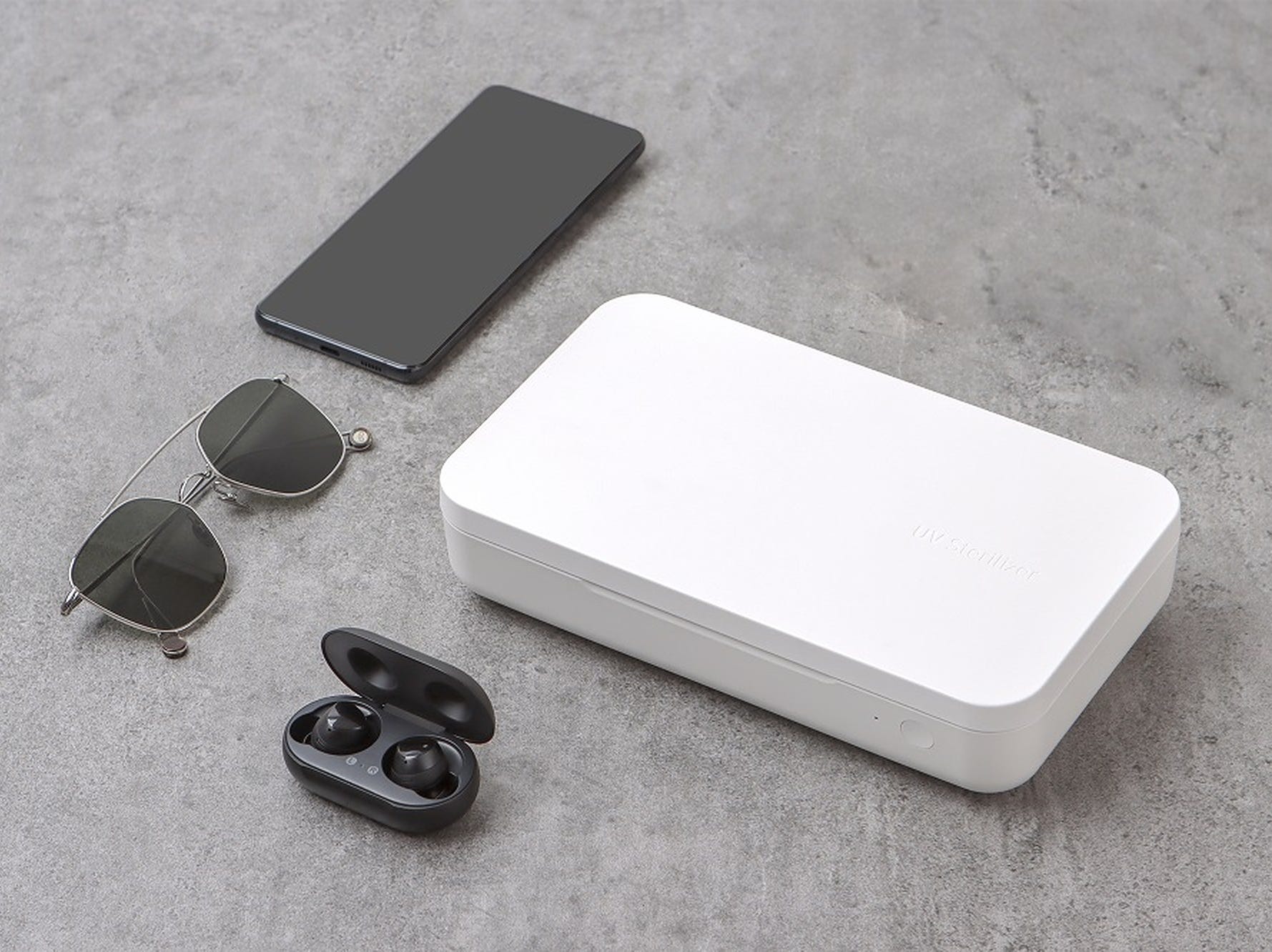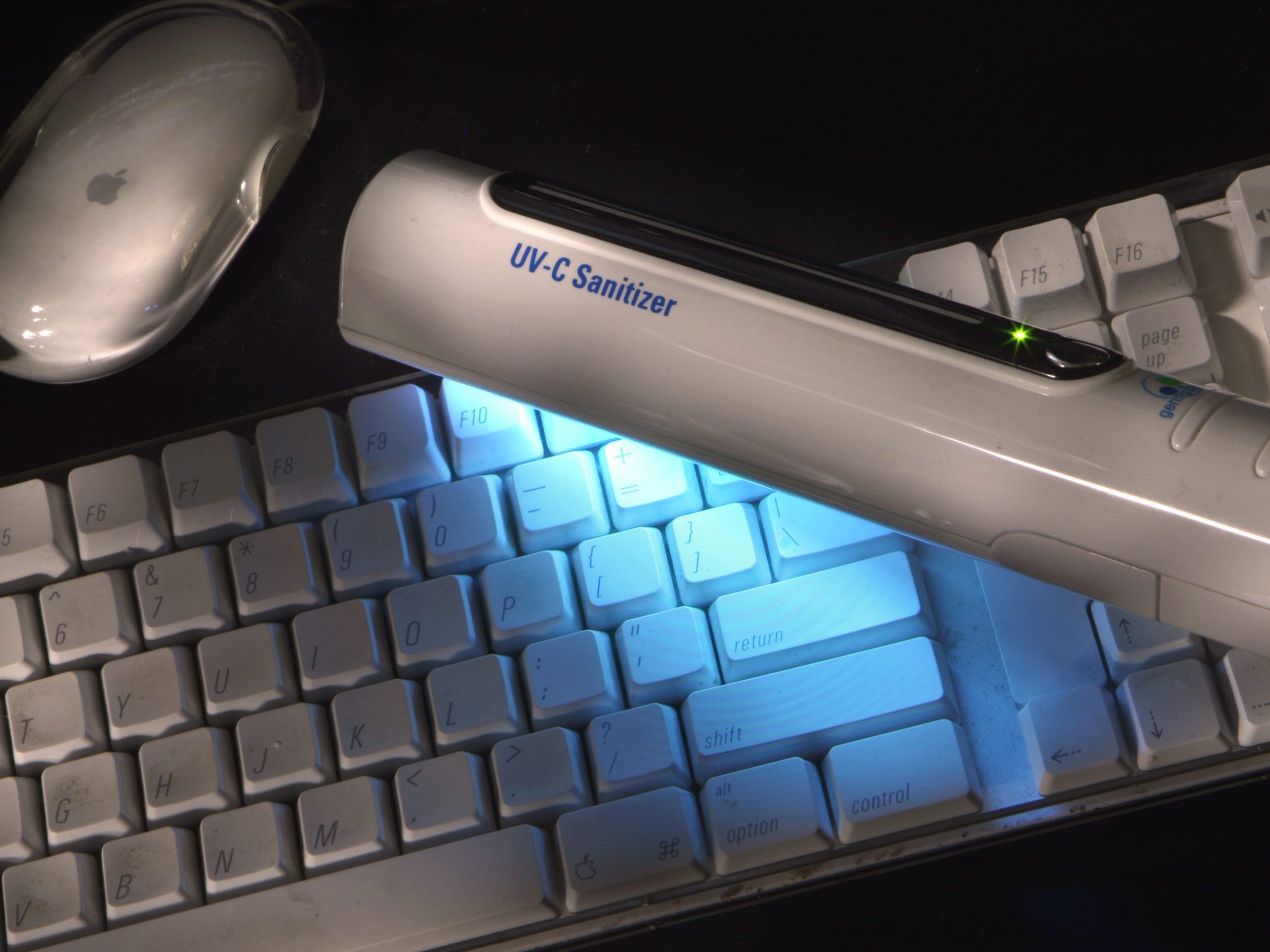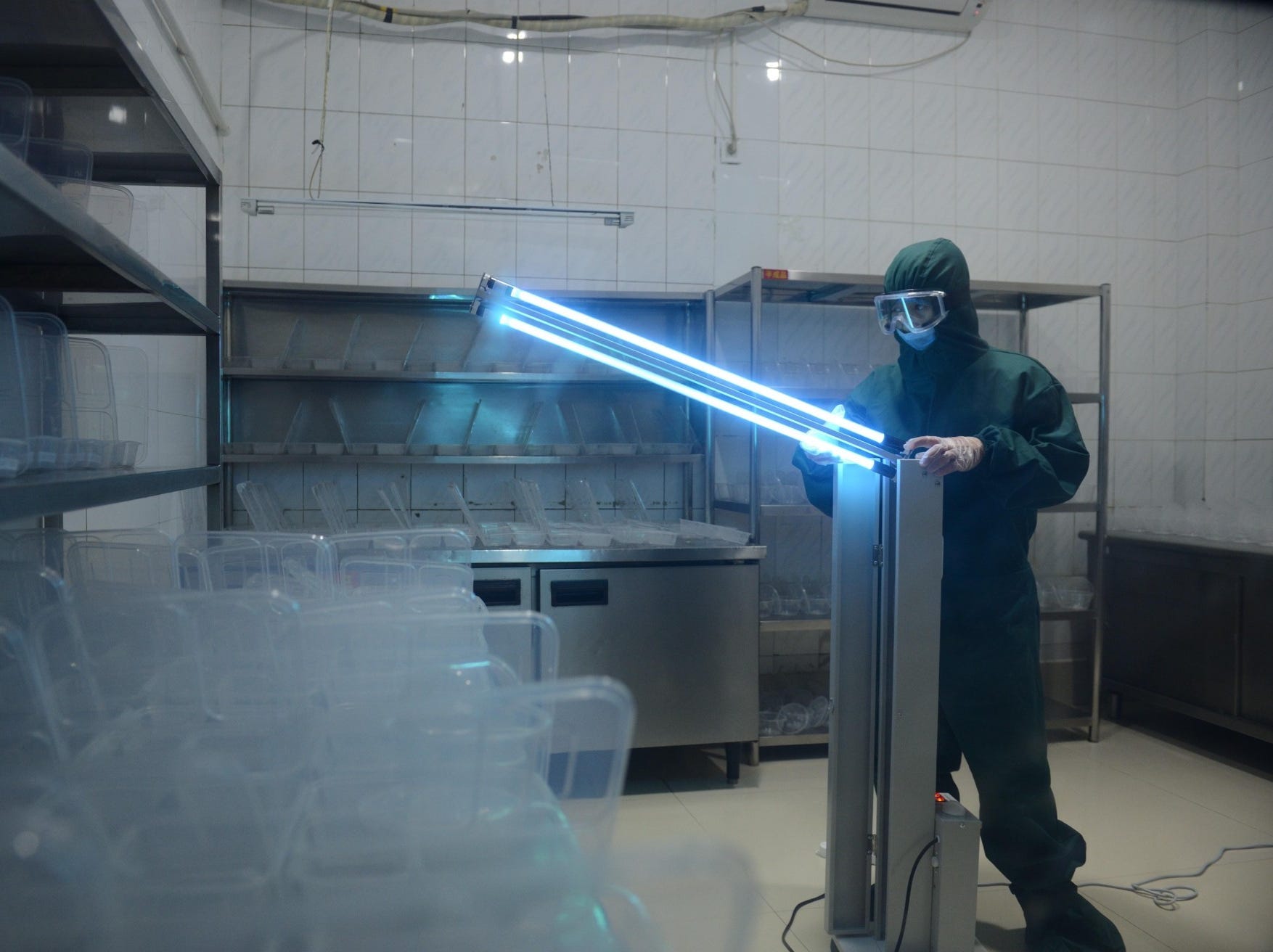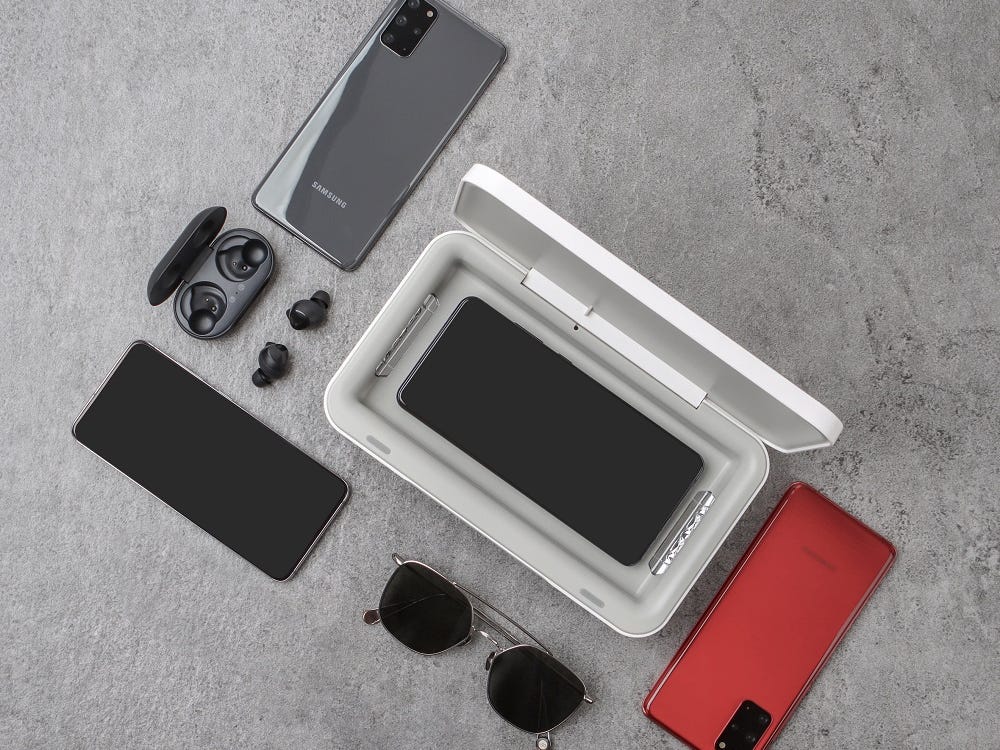
Samsung
- UV phone sanitizers can come as wands or boxes, though boxes are a safer and more effective means of sanitizing your mobile device.
- While a UV phone sanitizer box is closed, a bright UV-C light shines on the phone and reflective surfaces for anywhere from three to 10 minutes.
- University of Haifa and Oranim College’s Yoram Gerchman cautions against shorter sanitization cycles, suggesting your device should go through a 10 to 20-minute cycle to address viruses.
- Visit Business Insider’s Tech Reference library for more stories.
There are always niche products that benefit from a sudden event, and UV phone sanitizers are no exception.
In the months following the initial coronavirus pandemic shutdown in spring 2020, UV light sanitizers for phones have seen a jump in popularity. According to Google Trends, the search topic “PhoneSoap 3 UV cell phone sanitizer” shot up to a peak in mid-March and is creeping back up once again.
The devices that have popped up in Instagram feeds and online ads may seem like a scam – they typically claim to clean your phone in minutes and feature promises like “Kills 99.9% of Bacteria & Viruses” and “cutting edge technology.” But they’re not new. UV phone sanitizers were here long before 2020.
Despite shoppers having a range of sanitizing options at their disposal, UV light can be appealing to consumers because it’s dry and free of cleaning chemicals. Popular examples include PhoneSoap’s UV Sanitizer, Samsung’s Qi Wireless Charger and UV Sanitizer, or Mophie’s UV Sanitizer.
They usually look like a container that emits a blueish LED light and face no risk of liquid damage, presumably no wiping, and no trash. More importantly, there’s growing evidence that some of these devices work – if you choose and use them wisely.
"It's not a bad product," said Yoram Gerchman of the University of Haifa and Oranim College in Israel, who researches disinfection with UV light. Still, he cautioned that there were multiple considerations for using a UV light sanitizer, including timing, safety, and how dirty the phone is to begin with.
What is a UV phone sanitizer?
A UV phone sanitizer looks like a box or a chamber that opens up with space for your phone. They have built-in lights that turn on at the push of a button or as soon as the box shuts.
While the box is shut, a bright UV-C, or Ultraviolet-C, light shines on the phone and reflective surfaces in the box for anywhere from three to 10 minutes. Many phone sanitizers available online can charge your phone while running the cycle, and some have extra space for other objects like keys or credit cards.

Kirk McKoy/Los Angeles Times via Getty Images
Several sanitizers come in the form of a "wand," or handheld light that also claims to disinfect at near-perfect levels. Gerchman says that not only are these wands less effective than a box sanitizer but that they also pose a safety hazard.
UV-C light can damage the skin and eyes, according to the EPA. The FDA also noted that it should never be viewed directly. Because the likelihood of exposing your skin and eyes to UV-C light increases with the wand, you may want to opt for the sanitizer boxes. Many phone sanitizer boxes close before the light turns on, though it's a good idea to check that the box has an automatic shut-off when closed.
How does UV light disinfect?
UV, or ultraviolet, light is a type of electromagnetic radiation that is all around us. UV light is what makes people burn in the sun or tan in a tanning booth. UV-A light is what you might find in a black light - it's a large-wavelength version of UV light that generally isn't hazardous. UV-C - what most phone sanitizers use - is a small-wavelength kind that can break down microbes at a subcellular level.
That's why bacteria and viruses, including pathogens, break down under UV-C lights and are "inactivated." According to Gerchman, certain wavelengths of UV-C light cause new chemical connections to form and stop the enzymes that let a pathogen's genetic material replicate. Once microbes are "inactivated," the surface can be considered disinfected. The FDA reports that "UV-C radiation is a known disinfectant for air, water, and nonporous surfaces," and has "effectively been used for decades to reduce the spread of bacteria."

Liu Wenhua/China News Service via Getty Images
But not all phone sanitizing lights are created equal. It's essential to do a little research into any sanitizing devices you're considering for purchase. Look for companies that cite lab results to show their products were effective and products that note the UV light wavelength they emit.
The nanometer wavelengths effective for killing bacterial growth are in the 200s range, according to several studies. For example, the PhoneSoap 2 emits UV-C light at 254 nanometers. Gerchman said bigger wavelengths, from 265-285 nanometers, also work.
How effective are UV phone sanitizers against viruses?
Now for the elephant in the room: do UV phone sanitizers actually "kill" SARS-CoV-2, the virus that causes the disease known as coronavirus or COVID-19? The short answer is most likely, with some caveats. Both a study Gerchman worked on and the FDA's informational page on UV lights and lamps suggest that UV-C radiation is very effective against viruses that aren't exactly the same as the SARS-CoV-2 virus but closely related.
Other studies have looked at the SARS-CoV-2 virus directly and found that UV-C light inactivated it after nine minutes in health care settings and that wavelengths lower than 254 nm were also sufficient for surface contamination.

Samsung
So while the chances that a UV-C light could rid your phone of SARS-CoV-2 are good, they're not certain. Users should consider factors like timing, as well. Some phone sanitizers have very short cycles, which might not do the trick. "A three-minute cycle is scary," Gerchman said. UV light phone sanitizers "would probably be effective if you do it for a long time," Gerchman said. "Meaning something like 10, 20 minutes." Some lamps, he added, take a long time to heat up.
Microbes can also hide beneath layers of grime, dust, or even fingerprints. According to Gerchman, "UV works only on line of sight. Because it's light, at the end of the day, it does not go over corners." So unless your phone is totally wiped down before a UV light session, the UV-C cycle might not have the intended results.
And if you'd need to wipe down your phone anyway, you might as well use an alcohol wipe to disinfect it.
Related coverage from Tech Reference:
-
How to properly clean a Samsung Galaxy S10 without damaging your device
-
How to properly clean any Mac computer's keyboard
-
How to properly clean any iPhone model without damaging your device
-
How to enable COVID-19 contact tracing on your iPhone, and receive periodic exposure notifications
-
How to properly clean your keyboard without damaging it, whether it's wired, wireless, or built into a laptop